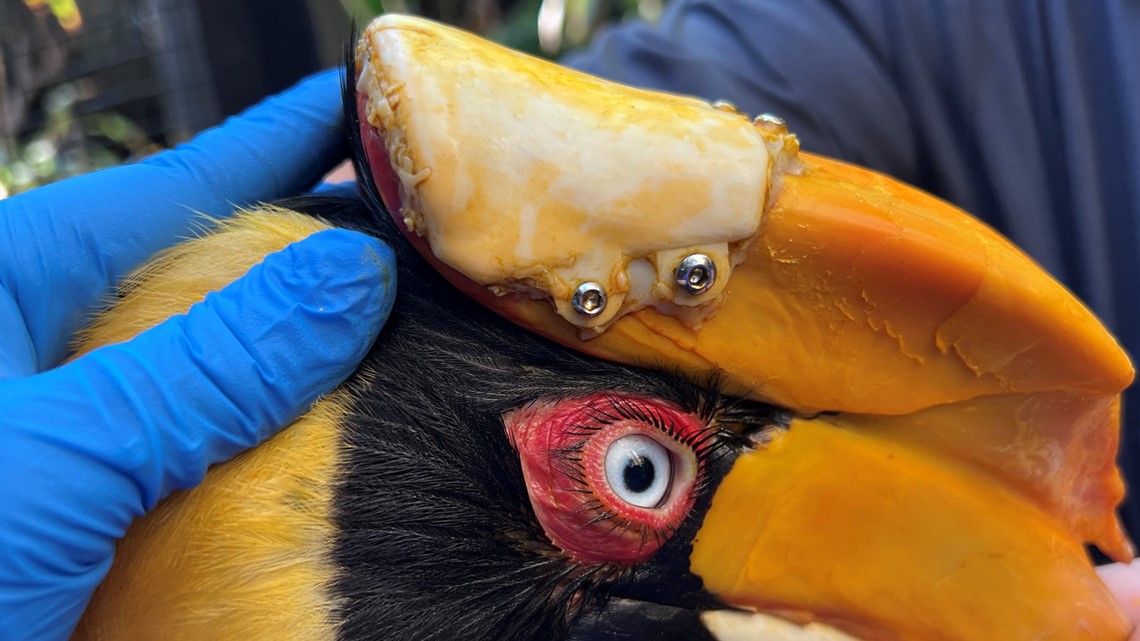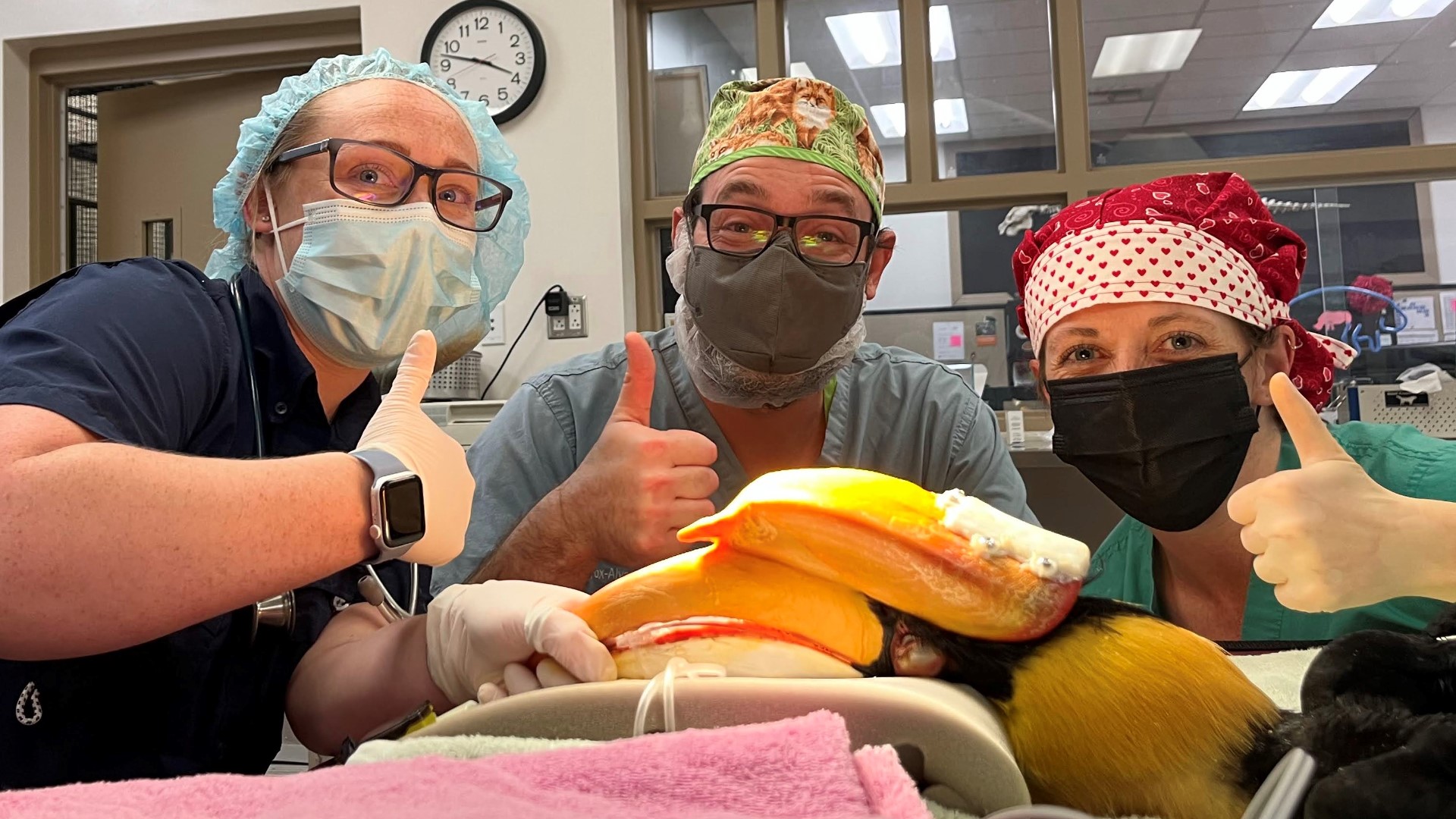TAMPA, Fla. — A “top-tier medical team” appears to have saved the life of a 3-foot-long bird at ZooTampa using an innovative solution: a 3D printer.
Caretakers grew worried when Crescent, a 25-year-old great hornbill, developed a lesion at the base of her casque, which is the hollow horn or helmetlike growth found on the top of her head and above the upper part of her bill. Vets suspected it might be squamous cell carcinoma – a skin cancer frequently found in humans that’s often deadly in hornbills. As they suspected, it turned out to be a life-threatening cancerous tumor.
From there, it became a race to save her life.
ZooTampa reached out to veterinarians and human doctors, who agreed to volunteer their time. In a news release, Dr. Kendra Baker, an associate veterinarian at the zoo, described it as “an all-in effort” that included conversations with oncologists and imaging scientists.
A CT scan revealed that removing the tumor offered the best chance of saving Crescent’s life. However, because the tumor on her casque was so close to her skull, a typical surgery would have left her sinuses exposed.
“This tumor is typically found near the front of the casque in hornbills, but hers was in the back,” Baker explained in a statement.
Refusing to give up on the bird, the experts devised a solution to remove the tumor and cover her sinuses.
“We asked ourselves, if this was a human, what would we do? So, we began to plan how to fix Crescent’s casque using the technology we use every day on our human patients – 3D printing,” explained Dr. Summer Decker, vice chair for research and innovation at the University of South Florida’s Department of Radiology.
The zoo says vets worked with physicians, biomedical engineers and specialists to surgically remove the tumor and replace it with a new 3D-printed prosthetic. A private biomedical 3D laboratory helped with the surgery, which the zoo described as the first of its kind on a hornbill in the United States and only the second worldwide.
ZooTampa says the 3D-printed “replacement beak,” for lack of a better word, was created by Formlabs. The company is a top 3D-printing manufacturer that specializes in medical products.
“Formlabs donated the material, and the USF Health Radiology 3D team printed the surgical guide and new casque on a Formlabs 3D printer developed for healthcare use,” ZooTampa explained in the release.
Dental acrylic and titanium screws were used to attach the 3D-printed casque to Crescent’s upper bill.
Since the procedure, ZooTampa says Crescent has been doing well. Caretakers haven’t seen any changes in her behavior. Nonetheless, Crescent is being monitored closely after returning to the outdoor aviary she calls home.
“An unexpected benefit came when Crescent began preening within hours after surgery,” ZooTampa added. “The Formlabs resin happened to be compatible with the yellow preening oils secreted from the glands above her tail, giving the new casque the same bright glow as her original one.”
The brightly-colored great hornbills are among the largest of the hornbill family. While flying, they often produce a "whooshing" sound because they lack a set of short feathers under their wings that is common in other birds, according to experts.



